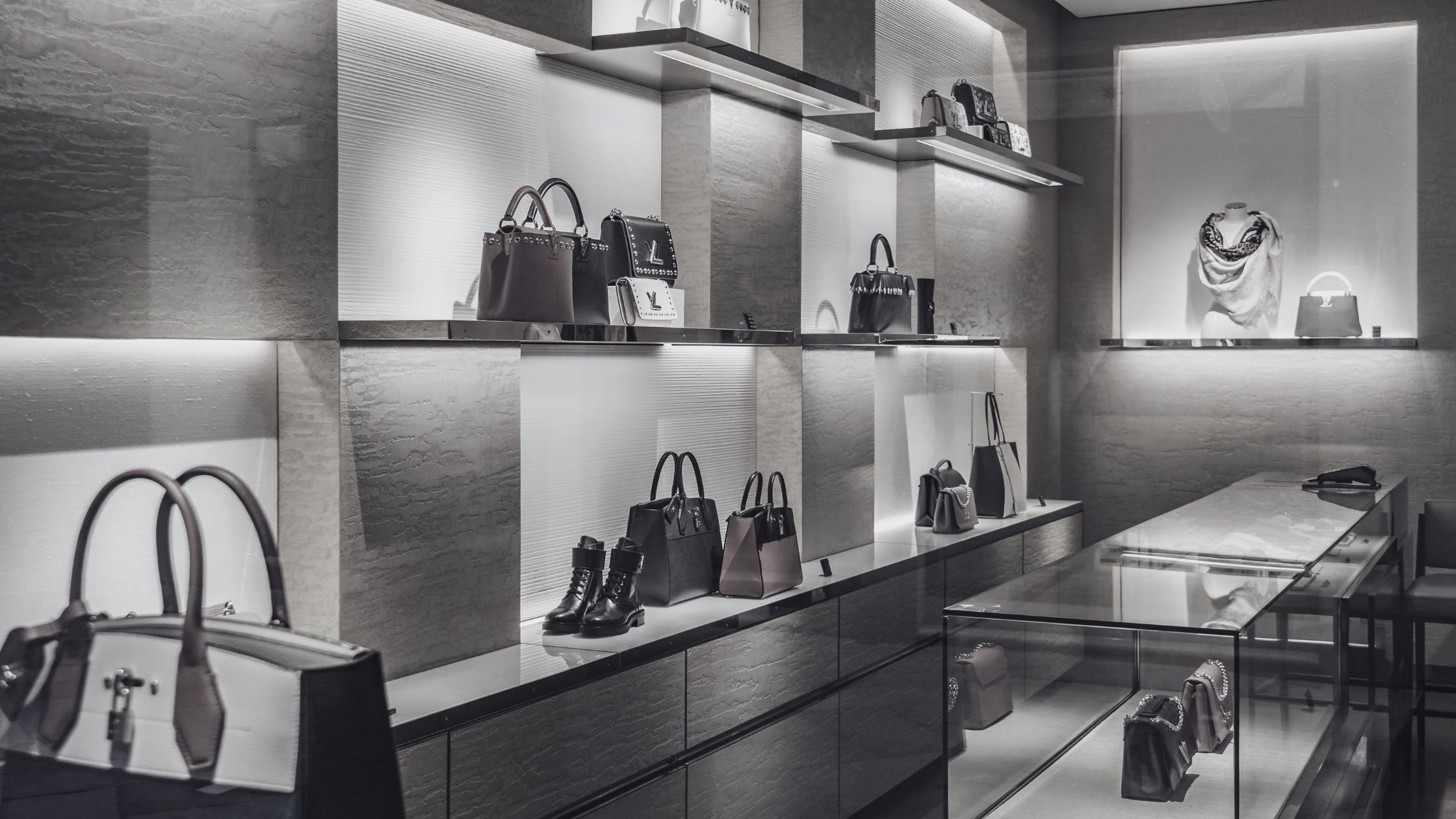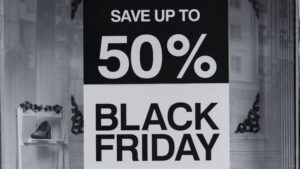Luxury fashion retailers have seen consistent drops in foot traffic visits compared to Q1 2024, with big names such as Versace and Gucci seeing drops of over 18% in Q1 2025.
There are some exceptions to this widespread trend such as Bottega Veneta (+3.17%) and Cartier (-0.03%) but overall our data shows luxury brands are struggling to bring in customers in store.
At the very least, knowing this wider trend can help luxury retailers benchmark performance and set expectations. By analyzing on a closer level such as store performance and spending insights, luxury retailers can decide what the next best steps are.
At pass_by, we offer the highest in market accuracy with 94% correlation to ground truth, over 15 data inputs, and a full 90 days of predictive feeds. Sign up to our newsletter so you never miss a report.
Biggest luxury fashion brands foot traffic data
The biggest luxury fashion retail brands have been struggling to increase store visits. To see what’s going on, we’ve analyzed major luxury brands’ performance.
Retail foot traffic refers to the number of customers visiting a store, giving you a clear picture of consumer interest and engagement. In the competitive world of luxury fashion, staying ahead often requires analyzing these metrics to adapt strategies effectively.
The biggest luxury fashion retail brands are:
- Chanel
- Dior
- Louis Vuitton
- Prada
- Gucci
- Cartier
- Burberry
- Versace
- Balenciaga
- Dolce & Gab
- Armani
- Bottega Veneta
- Alexander McQueen
- Givenchy
- Tom Ford
- Hermès
- Valentino
At pass_by, we offer the highest in market accuracy with 94% correlation to ground truth, over 15 data inputs, and a full 90 days of predictive feeds. Sign up to our newsletter so you never miss a report.
Chanel
- Annual revenue: $19.7 billion (2023)
- Number of stores: over 130 stores in the U.S
- Size: 36,500 employees worldwide (2023)
In 2023, Chanel saw a 16% increase in sales compared to the previous year. Since then, visits to Chanel stores have been decreasing year-on-year, though Chanel can take some comfort in that other luxury retailers have suffered worse drops.
Named the world’s most valuable beauty brand in 2025 by Brand Finance, surpassing L’Oréal, Chanel has achieved triumph in its key initiatives. These include celebrating the 100th anniversary of the iconic Chanel N.5 fragrance, inaugurating a new jewelry boutique on New York’s prestigious 5th Avenue, and welcoming Matthieu Blazy as the new artistic director.
Dior
- Annual revenue: €84.7 billion (Dior Group, 2024)
- Number of stores: over 50 stores in the U.S
- Size: more than 215,000 employees worldwide (2024)
The Christian Dior group reported revenue of $22.9 billion (€20.3 billion) in the first quarter of 2025. Noting the disrupted geopolitical and economic environment, Dior Group found resilience and momentum across its brands.
It did, however, report a slight decline in sales in United States, despite a good performance in Fashion & Leather Goods and in Watches & Jewelry sides of the Group. This matches are foot traffic data, which shows that Dior stores have seen a dip in visits.
Louis Vuitton
- Annual revenue: $88.3 billion (LVMH, 2024)
- Number of stores: over 1,193 LVMH stores in the U.S
- Size: more than 213,000 employees worldwide (2023)
Compared to many of its competitors, Louis Vuitton has seen fewer store visit decreases, and even managed to maintain visit numbers in Q4 2024. But the retailer has been struggling to convert these visits into sales.
According to Bloomberg, LVMH shares dropped after the luxury group published weaker-than-expected sales, weighed down by sluggish demand for high-end goods in China and the US and an escalating trade war. In the last twelve months, LVMH’s stock has dropped by 38% as investors grow wary of the difficult environment in the luxury sector.
All isn’t lost, however. LVMH suffered declines in all divisions bar watches and jewelry, which reported a flat performance compared to the previous year. Pivoting to meet customer demand could be the answer to Louis Vuitton’s conversion problem.
Prada
- Annual revenue: 5.4 billion euros (Prada Group, 2024)
- Number of stores: around 51 stores in the U.S
- Size: more than 14,876 employees (2023)
Prada has a strong presence in the United States with a total of 51 stores as of April 10, 2025. New York has around 22% of all Prada stores in the U.S. Due to Prada’s strong presence in New York, the brand suffered major visit losses during the height of the COVID-19 pandemic when New York lacked its usual crowds of tourists.
Since then, Prada has recovered somewhat. Visits are still down compared to previous years and each quarter follows the trend of luxury retail decline.
Prada did however report four consecutive years of double-digit growth in 2025, with net revenues up 17% to reach Euro 5.4 billion. Prada’s growth was driven by an up 18% year-on-year increase in full price volumes across Prada Group even as Prada stores themselves have sometimes struggled.
Andrea Guerra, Chief Executive Officer and Executive Director of Prada Group, said, “Prada confirmed its positive growth trajectory and Miu Miu gained a whole new level of visibility and scale.”
It seems Prada Group’s variety of brands offers some form of stability in trying economic times.
Gucci
- Annual revenue: 17,194 billion euros (Kering Group, 2024)
- Number of stores: around 117 stores in the U.S
- Size: around 20,032 employees worldwide (2024)
Gucci’s parent company, the Kering Group, has reported many woes. A fall of 25% in Gucci sales in Q1 2025 is a large drop. In comparison, rival group LVMH reported a 5% in the same quarter.
This comes as no surprise, then, that sales to Gucci stores have seen the largest drop in the luxury sector in all quarters since Q2 2024.
Gucci’s strongest presence is in California. There are around 117 Gucci stores in the United States, about 21% of those being in California. With the cost of food, beverages, and energy all increasing by 28% according to the Public Policy Institute of California, it seems that luxury is not the priority for those on the west coast.
Cartier
- Annual sales: 20,616 million euros (Richemont, 2024)
- Number of stores: around 30 stores in the U.S
- Size: around 10,673 employees worldwide (2024)
Cartier’s parent company Richemont reported a 3% increase in sales driven by Jewellery Maisons and retail, each totalling 69% of Group sales. Richemont’s sale numbers and foot traffic growth offers hope for the turbulent luxury retail sector, which has seen an arrary of struggles in recent times.
Analyst expectations predicted a 1% increase in sales, but Richemont delivered a 10% year-on-year increase to $6.37 billion (6.2 billion euros) for the three months to end-December in 2024.
The hope of higher sales is further buyoed by the Richemont’s high double-digit growth in the Americas and Europe, even as sales in China underperformed.
Parent company Richemont owns Cartier, Van Cleef & Arpels, Piaget, Vacheron Constantin, Jaeger-LeCoultre, IWC Shaffhausen and Montblanc.
At pass_by, we offer the highest in market accuracy with 94% correlation to ground truth, over 15 data inputs, and a full 90 days of predictive feeds. Sign up to our newsletter so you never miss a report.
Burberry
- Annual revenue: £2,968 million (2024)
- Number of stores: around 52 stores in the U.S
- Size: over 9,336 employees worldwide (2024)
British luxury retailer Burberry had an interesting Christmas. Thanks to its marketing campaign promoting its scarfs and winter wear, the US proved to be a keen market. Burberry reported retail sales were up by 4% in Q4 2024, although visits were down year-on-year, customers who did go in store bought more.
Burberry still has some ways to go before it reaches stability as it suffered a $54.5 million (£41 million) operating loss in the first half of its financial year.
Versace
- Revenue: $264 million (Q4 2024)
- Number of stores: around 45 stores in the U.S
- Size: 1,500 – 5,000 employees worldwide (2024)
Parent company Capri Holdings (owners of Versace, Jimmy Choo, Michael Kors) have reported drops in revenue of 3.6% on a reported basis and 2.9% on a constant currency basis driven primarily by softening demand globally for fashion luxury goods. Revenue in the Americas declined 1%, which while not ideal is preferable to the 6% drop in Asia.
Versace’s did however report an increase in their online presence, with their global database increased by 1.9 million new consumers, representing 30% growth over the last year. Consumers remain interested and engaged in aspirational and luxury goods, but getting them to buy is another matter.
Balenciaga
- Revenue: 17,194 billion euros (Kering Group, 2024)
- Number of stores: around 36 stores in the U.S
- Size: over 4,000 employees worldwide (2024)
The Kering Group has seen many struggles in Q1, chief among them the fall in sales of Gucci, but Balenciaga too has been struggling to bring in visit numbers. The Group reported a drop in 14% of the ‘Other Houses’ division (including Balenciaga and Alexander McQueen).
Balenciaga has caught headlines for its short-term tactics of promoting eye-brow raising products, including most recently2,700 yuan hairpins in China. Under its creative director, Balenciaga has historically gained a reputation for taking ordinary object and catapulting them into luxury. While this strategy has gained the brand viral success, it is struggling to bring that online attention into stores.
The Kering Group is more than aware of Balenciaga’s struggle to jump these hurdles and is already working on a strategy to adjust, but grapplign Gucci first and foremost, to pivot to a long-term vision.
François-Henri Pinault, Chairman and Chief Executive Officer stated, “In a difficult year, we accelerated the transformation of several of our Houses and moved determinedly to strengthen the health and desirability of our brands for the long term. Across the Group, and at Gucci first and foremost, we made critical decisions to raise the impact of our communications, sharpen our product strategies, and heighten the quality of our distribution, all in the respect of the creative heritage that distinguishes our brands. We secured our organization, made key hirings, sped up execution, and intensified the efficiency of our operations. Our efforts must remain sustained and we are confident that we have driven Kering to a point of stabilization, from which we will gradually resume our growth trajectory.”
Dolce & Gabbana
- Revenue: 1.5 billion euros (2024)
- Number of stores: around 65 stores in the U.S
- Size: over 5,000 employees worldwide (2024)
Dolce & Gabbana has seen decreases in foot traffic since Q2 2024, following a similar trend across the luxury sector. The luxury retailer is now beginning to pivot its strategy to its beauty division, which has higher predicted growth than luxury clothes and accessories.
The company is also targeting €1 billion in beauty sales by the end of the 2027 financial year, following a shift from licensing to direct management of production and distribution of fragrances, makeup and skincare, according to Bloomberg.
Armani
- Annual revenue: 1.5 billion euros (2024)
- Number of stores: over 500 stores worldwide
- Size: over 8,700 employees worldwide (2024)
Armani follows the trend of luxury retailers seeing a large dip in visits in Q2 2024, followed by gradual decreases in the quarters following. Armani Group, did report founder revenues of €2.45 billion in 2023, up 6 per cent growth year-on-year in 2024.
In 2024, Armani said the group had hiked retail prices only modestly, despite inflation, due to its focus on medium-term goals. Depending on how things go in 2025, Armani may need to reconsider this strategy and apply short-term solutions to work towards those medium and long-term visions.
Bottega Veneta
- Annual revenue: 1.7 billion euros (2024)
- Number of stores: over 300 stores worldwide
- Size: over 3,100 employees worldwide (2024)
Bottega Veneta has been a bright spot for parent company Kering Group as sales have risen by 4% to €388 million ($438 million) in the first quarter of 2025. The Grouo reported that sales were up across all product categories at Bottega Veneta, driven by double-digit sales increases in Western Europe, North America and the Middle East, although wholesale revenue was down 13% on a comparable basis.
At pass_by, we offer the highest in market accuracy with 94% correlation to ground truth, over 15 data inputs, and a full 90 days of predictive feeds. Sign up to our newsletter so you never miss a report.
Alexander McQueen
- Annual revenue: $554.2M million euros (2024)
- Number of stores: over 100 stores worldwide
- Size: over 1,335 employees worldwide (2024)
Alexander McQueen stands out in the luxury fashion industry with its compelling presence and number of stores around the world. With over 100 stores worldwide, it’s evident that the brand’s global reach continues, although visits continue to tumble due to wider industy trends and economic factors.
Givenchy
- Annual revenue: $500M-1.0 billion (estimate, 2024)
- Number of stores: around 98 stores worldwide
- Size: 200 – 500 employees worldwide (2024)
Givenchy gained attention during Paris Fashion Week where new creative director Sarah Burton debuted a minimalist, “stripped back, not fussy” range and has now catapulted into headlines thanks to Cynthia Erivo of Wicked stardom wearing Givenchy to the Met Gala. While visits have dropped in recent quarters, we’ll see if this media attention can help Givenchy navigate the next.
Tom Ford
- Annual revenue: $255 million (2023)
- Number of stores: around 100 stores worldwide
- Size: 51 – 200 employees worldwide (2024)
Back in 2023, Tom Ford had a fantastic year with revenues advanced 28% year-over-year, helping to boost parent company Zegna Group. Since then, Tom Ford has suffered a hit from economic factors and Trump-era tariffs, leading to an unsteady first quarter of 2025.
Hermès
- Annual revenue: $15.9 billion (2024)
- Number of stores: around 43 stores worldwide
- Size: 200 – 500 employees worldwide (2024)
In April, Hermès announced price increases during a first quarter conference call to “compensate for the gross impact of these new customs duties”.
Hermès has outperformed much of the industry in sales, reporting a revenue reached €4.13 billion in the first quarter, up 7 per cent year-on-year at constant exchange rates.
Valentino
- Annual revenue: $15.9 billion (2024)
- Number of stores: around 175 stores in the U.S
- Size: 1,001 – 5,000 employees worldwide (2024)
Valentino has gone through a series of foot traffic drops over 2024 and into 2025. Worse still, sales Slipped by 2% in 2024. All of this has led to new creative director Alessandro Michele and a decision to overall its collections and image in a long-term strategy.
The retailer also reported a 22% decrease in operating profit, due to rising costs of directly managed stores.
At pass_by, we offer the highest in market accuracy with 94% correlation to ground truth, over 15 data inputs, and a full 90 days of predictive feeds. Sign up to our newsletter so you never miss a report.
Luxury retail FAQs
What is the difference between retail and luxury retail?
Luxury retail sets itself apart from typical retail by emphasizing exclusivity, higher price tags, superior quality, and a highly personalized shopping experience. While general retail spans a wide spectrum of businesses offering goods and services, luxury retail specifically caters to affluent customers who desire prestige, status, and premium products.
How big is the luxury retail industry?
Revenue in the Luxury Fashion market amounts to US$150.37bn in 2025. The market is expected to grow annually by 3.09% (CAGR 2025-2029), according to Statista. In the United States, the luxury retail industry generates around $36 billion a year, which is the most of any country for this industry.
What is the #1 luxury brand?
In terms of brand awareness, Gucci comes in as the number one luxury brand in the United States with 90% brand awareness, closely followed by Chanel and Dior. In terms of usage, Burberry comes in as number one followed by Gucci, Louis Vuitton and Dior according to survey data.
Who is the largest luxury fashion market?
China’s share of the luxury market is poised to climb to about 40% by 2030. This growth will position China as the world’s largest luxury goods market, surpassing Europe and the United States.





